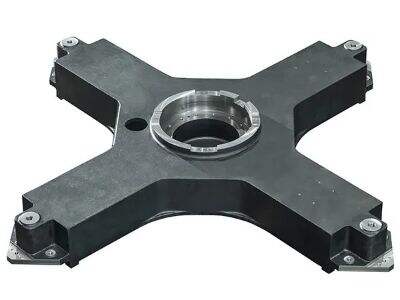Flatness Of The Base May Not Sound Like Much
But for stability when transferring robots, it can make all the difference in the world. At Pingcheng Machinery we know how critical base flatness is to the efficiency and stability of transfer robots. (Read: Why Base Flatness in Transfer Robots Matter & How They Affect Performance) Here is a closer look at the importance of base flatness when it comes to transfer robot stability, and what that can mean for overall robot performance.
The Role of The Base Flatness for Stability of The Transfer Robot
The bottom of a transfer robot is like a base and it is the core of the whole machine working on. However, if the base is not flat it can make your robot wobble and hinder components from fitting properly as a result having an effect on your robot. Flatness specification is important because the flat base helps prevent errors and downtimes during the production process in which the robot must navigate between various points.
Flat base is the top concern for machining during the production at Pingcheng Machinery to ensure our transfer robot run accurate and steady. In adhering to precise specifications for base robot flatness, we can reduce the possibility of erratic play due to imperfections on the surface, and deliver a predictable performer that our customers can rely upon.
The Effect of Base Flatness on the Performance of a Transfer Robot
Apart from this effect on performance, if the base of a transfer robot is not flat then everything can fall apart. Staggering can lead to vibration, misalignment of devices, and it raises the issue of wear on mobile hardware. This can cause reduced accuracy, longer cycle times and consequently a lower productivity.
The purchase of transfer robots with a flat, vibration¬-free base promises an improvement in performance, accuracy and production output. Pingcheng Machinery maintains a high standard for base flange that translates into peak performance and reliability with all transfer robots.
The Significance of Base Flatness in Robot Stability
The flatness of the base is important for stability in robots since it affects how well the robot can move without chattering or overshooting. The flat base forms a stable surface upon which the robot may operate, decreasing possible sources of vibration, misalignment, and movement error. This results in higher stability, accuracy and overall performance of the robot.
At Pingcheng Machinery, we know it well that base flatness is the most important thing in robot stability. And because we carefully control quality and standards of base flatness, you can count on us to provide transfer robots that attain the highest levels of performance and reliability.
Typical Depth-Varying Flatness Problems in Stability of Transfer Robots Based on Nests
Common transfer robot stability and status signal issues involving base flatness are misalignment of parts, greater levels of vibration, diminished accuracy and longer cycle times. These factors affect the effectiveness & efficiency of the production process in general by leading to delay, mistakes and higher costs.
Therefore, emphasis should be placed on base flatness in the design and fabrication of transfer robots to solve these problems. With the flat and firm base, items will not tilt or waffle and you can carry-on with your business without having to worry about any surface related problems in your company.
Enhancing the Performance of a Transfer Robot by Means of Base Flatness
Transfer robot performance improved by base flatness the execution and use of Transfer Robots dictate the purchase of high-end quality robots with a properly flat, stable base. The companies might also want to periodically maintain and calibrate their bases to make sure you don't start leaning over time. By putting the focus on robotic base flatness, companies are able to make their transfer robots perform at their best – maximizing production up-time and product quality while boosting your overall productivity.
At Pingcheng Machinery we are focused on supplying transfer robots with excellent base flatness which can help your production operation. Featuring state-of-the-art technologies and base flatness best practices, we provide transfer robots that outperform in terms of performance, stability and precision.
Table of Contents
- Flatness Of The Base May Not Sound Like Much
- The Role of The Base Flatness for Stability of The Transfer Robot
- The Effect of Base Flatness on the Performance of a Transfer Robot
- The Significance of Base Flatness in Robot Stability
- Typical Depth-Varying Flatness Problems in Stability of Transfer Robots Based on Nests
- Enhancing the Performance of a Transfer Robot by Means of Base Flatness

 EN
EN
 AR
AR
 BG
BG
 HR
HR
 CS
CS
 DA
DA
 NL
NL
 FI
FI
 FR
FR
 DE
DE
 EL
EL
 IT
IT
 JA
JA
 KO
KO
 NO
NO
 PL
PL
 PT
PT
 RO
RO
 RU
RU
 ES
ES
 SV
SV
 TL
TL
 IW
IW
 ID
ID
 SR
SR
 SK
SK
 SL
SL
 VI
VI
 GL
GL
 HU
HU
 TH
TH
 TR
TR
 FA
FA
 GA
GA
 CY
CY
 IS
IS
 KA
KA
 LA
LA
 MI
MI

